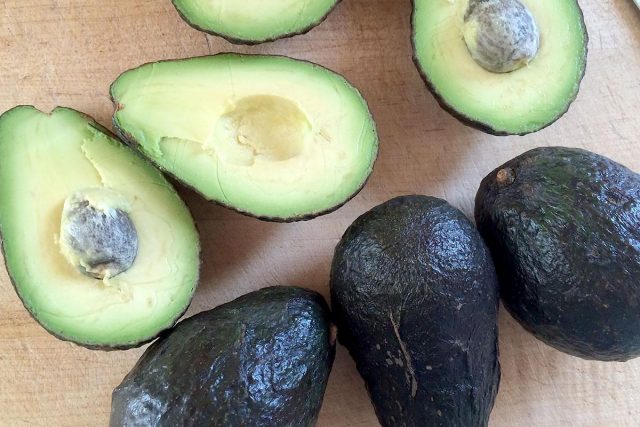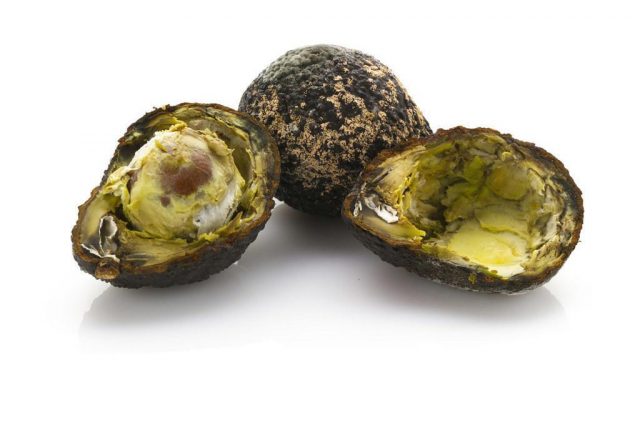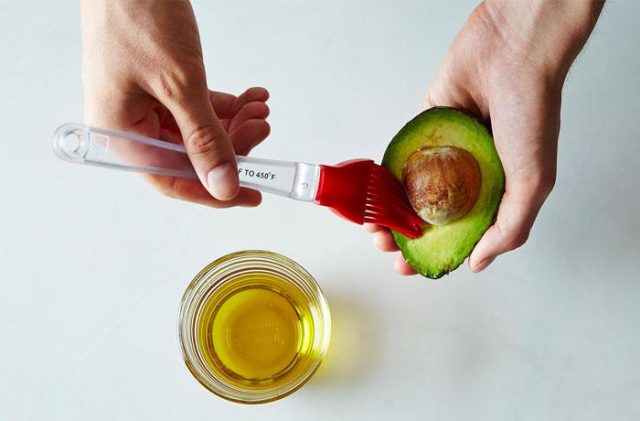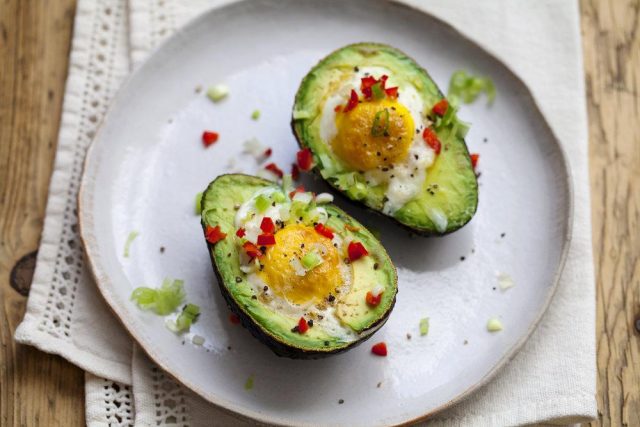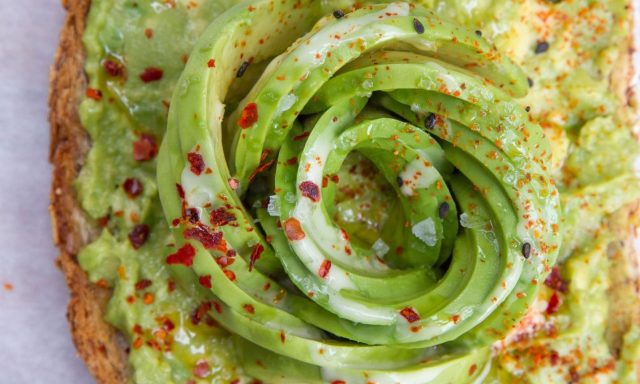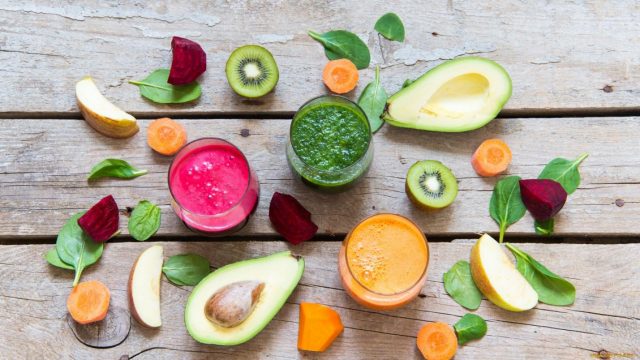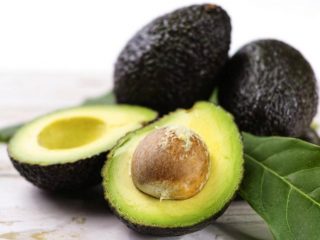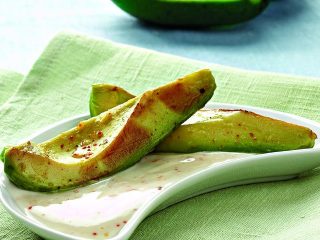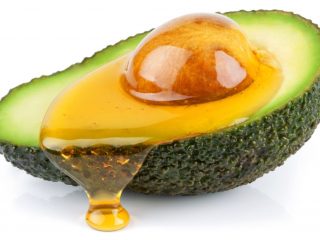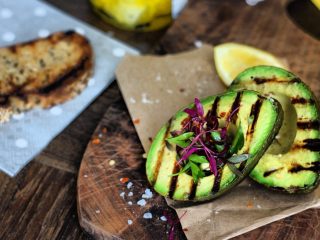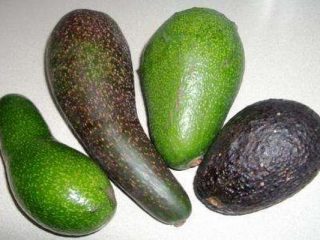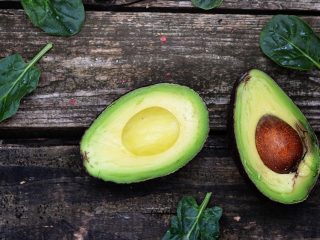Content
Avocado is a unique exotic fruit that grows in tropical or subtropical climates. In addition to the delicate taste of the pulp, it is famous for its high content of micro- and macroelements. Avocado Hass is the most common variety available in stores throughout the year.
Description of Hass avocado
The avocado is often called the alligator pear, or the American Perseus. This is an evergreen low tree with the fruits of the same name. Avocado Hass is one of the varieties that was bred from two types: Mexican and Guatemalan.
American Rudolph Hass successfully sprouted a seed in his garden. Interestingly, he took the bone from one restaurant after a hearty dinner. After rooting, he grafted a branch from another variety, which he brought from Peru, to the seedling. This variety was named after his last name when he applied for a patent in 1935. After that, the enterprising Californian sold the seedlings to a local nursery. Since then, the variety has been successfully cultivated in the United States and is called Californian. Due to the peculiarities of the translation, the Californian avocado in Russia is often called Hass or Haas: both names imply the same variety.
The fruits ripen on trees growing up to 20 m. The peculiarity of the plant is the year-round leaf fall. Bisexual flowers bloom in the leaf axils. Fruits begin to appear on the upper branches and then on the lower ones. Up to 200 kg of fruits are harvested from one tree per season.
Brief description of Hass fruit:
- epileptic or pear-shaped;
- their weight can reach 500 g, and, on average, is 300 - 350 g;
- rind: dense, lumpy or smooth.
The color of the peel when fully ripe can be almost black: this can be seen in numerous photos of the Hass variety. The pulp has a light green tint. Taste - creamy, buttery with nutty notes. The ripe fruit of the Hass variety is soft, the stone is easily separated.
The Hass variety is grown in Brazil, Canada, Mexico, Spain. It grows successfully on moist, light soils, tolerates rainy seasons and drought periods well.
How avocado Hass differs from usual
First of all, the difference between the Hass avocado and the usual one lies in the shade of the peel: when fully ripe, it becomes black. Other varieties are usually green and light green in color.
The Hass variety tolerates transportation and storage well, which may differ from other varieties. Hass fruits ripen on trees all year round, unlike other common varieties. The pulp is most suitable for the preparation of the classic guacomole because of its special nutty flavor.
Hass | Other varieties |
Pear-shaped. | Rounded shape. |
Strong pronounced taste. | Weak taste. |
Increased oiliness. | Average oiliness. |
Benefits of Hass Avocado
Avocado Hass is consumed raw. Heat treatment destroys the fibers and deprives the fruit of its main beneficial properties. Typically, avocados are included in meals that must be eaten fresh.
The pulp is appreciated for its high content of essential oils, which have unique beneficial properties.This feature increases the beneficial properties of the fruit:
- Micro- and macroelements endow the fruits of the Hass variety with the ability to positively influence metabolic processes in the body. This quality is especially useful for those who suffer from diseases of the digestive tract.
- Pyridoxine, which fills the pulp in large quantities, prevents the appearance of atherosclerotic plaques and helps to improve blood counts.
- Fatty monounsaturated acids become an activator of regeneration processes, which helps to improve the general condition of the body.
- Vitamin D contained in the pulp helps to normalize the growth of the skeletal system, and also affects the strengthening of blood vessels.
- The oil contained in the pulp is of particular value. It helps to reduce the risk of developing cardiovascular diseases, as it strengthens the heart muscle and stabilizes the activity of hematopoietic processes.
- Vitamin E and B vitamins have a beneficial effect on the condition of the skin, nails, hair.
- Folic acid, which is found in the pulp, is good for expectant mothers.
- Due to its fiber content, the fruit acts on the digestive system. It helps to more actively digest food and remove toxic substances from the body.
- Oleic and palmetic acids improve brain activity and also interfere with the processes that underlie the formation of cancer cells.
In addition, avocado is used as a component for the preparation of cosmetics. Thanks to the fatty oils that the fruit contains, an active regeneration process takes place at the cellular level. This quality is used by cosmetologists who include oil extracts in the compositions of the products.
Masks for the face, body and hair are prepared at home. The Hass variety is much better suited for this than others, as it contains an increased amount of oil. The benefits of eating Hass avocado become tangible if the fruit is consumed regularly.
How to choose avocado Hass
When choosing a fruit, you should take into account the peculiarities of the culture. The Hass variety, unlike other varieties, is chosen for the color of the peel. If it is not ripe, then the rind will be light green in color. When ripe, it turns almost black.
There are several accompanying signs that indicate the ripeness of the fruit:
- the area where the stalk is located should be flat, light brown;
- the fruit should be moderately soft to the touch;
- when shaken, the bone inside should shake slightly;
- a ripe fruit weighs more than an unripe one;
- the peel should be even, without damage or scratches;
- in a mature fruit, when pressed on the cutting area, a few drops of oil are released.
An overly soft fruit indicates that the fruit is already overripe. There are several varieties of ripeness at this stage. Many consumers are wondering whether it is possible to cook overripe fruit, whether it will not be harmful to health.
- Completely dark fruit with slimy contents and a plaque-covered bone should not be consumed.
- If the flesh of a Hass avocado is uniformly brown on the inside, with dark streaks and dots, then this fruit is spoiled.
- Black dots on the pulp of a light, even shade indicate ripeness, they can be cut with a knife and cooked according to the planned recipe.
How to eat avocado
Avocados are used to prepare a wide variety of dishes. The fruit can be a main ingredient or a supplement.
After purchase, the fruit is cut into 2 parts, the bone is removed. Due to the high iron content, the pulp quickly darkens when exposed to air. They prefer to cook avocados right after cutting, and use some small culinary tricks to prevent browning:
- the halves are sprinkled with lemon juice;
- the pulp is generously covered with olive oil.
The cut fruit can be stored in the refrigerator for 24 hours in a hermetically sealed container.After cutting, the bone is removed with a spoon. Ripe Hass avocado has a light brown pit.
Hass avocado is used to prepare puree soup, salads, sauces, cocktails. The fruit goes well with tomatoes, seafood and herbs. A raw, fresh avocado can be a light snack when placed on top of a slice of cereal bread, drizzled with olive oil, and seasoned with salt and pepper.
When buying an unripe avocado, it is left to ripen. In order to speed up the process, use one of the appropriate methods:
- placed in a paper bag and put away where it is warm and dry;
- bananas or apples are placed next to the avocado, which release ethylene, which accelerates the process of softening the tissues.
To soften a hard avocado before cooking, housewives use some tricks:
- the fruit is placed in the microwave for 30 seconds, after having covered it with a napkin (the effect of magnetic waves leads to softening of the tissues, the fruit becomes soft, it can be cut and cooked);
- the avocado is wrapped in foil and placed on the oven rack, kept for 10 - 15 minutes. at a temperature of 200 ° C.
These methods help to make the pulp suitable for cutting and cooking, but significantly affect the taste.
Alternatively, you can freeze avocados. It is usually frozen as a puree. To do this, the ripe pulp is cut into pieces, then mashed. A few tablespoons of lemon or lime juice are added to the mass. The mixture is leveled at the bottom of the container and removed to the cold. When freezing, the puréed mass will begin to expand, so do not fill the container to the brim. Frozen puree can be stored in this way for up to 6 months.
Avocado weight Hass pitted
The average weight of the Hass variety varies from 150 to 350 g. Fruits ripen all year round and are transported a little unripe, as they ripen quickly at normal temperatures.
The bone of a ripe fruit can weigh about 50 - 70 g. When the seed is removed, the fruit will become much lighter, but will remain heavy. The weight of a ripe fruit is largely dependent on the oil content.
Calorie avocado Hass
The content of beneficial fatty acids determines the calorie content of Hass avocado: on average, 1 pc. the fetus has about 160 kcal. Of these, about 15 g are fats. At the same time, the fruit is not a food product that can provoke fat deposition. This is due to the fact that the substances contained in the fruit can be quickly and easily absorbed.
This quality of avocados is used when planning a dietary menu. The fruit saturates the body, but fats are not stored, but are transformed into useful energy.
Nutritionists recommend preparing an avocado for breakfast or as a pre-dinner snack. Eating the fruit in the morning activates the body's metabolic processes and helps to stabilize digestion at an early stage.
Conclusion
Avocado Hass is a common alligator pear variety known for its excellent taste and unusual skin color. The variety is distinguished by its ability to withstand long-term transportation and storage. It is used to prepare delicious, healthy meals, as well as a herbal supplement that can have a positive effect on health.

